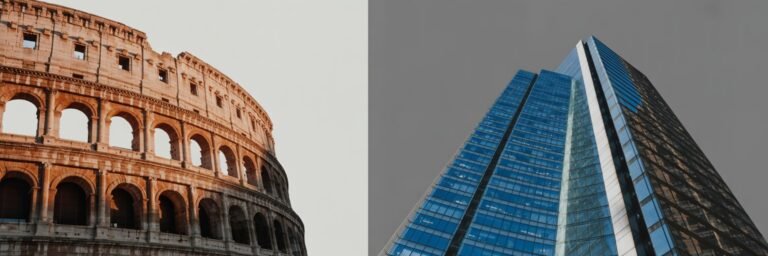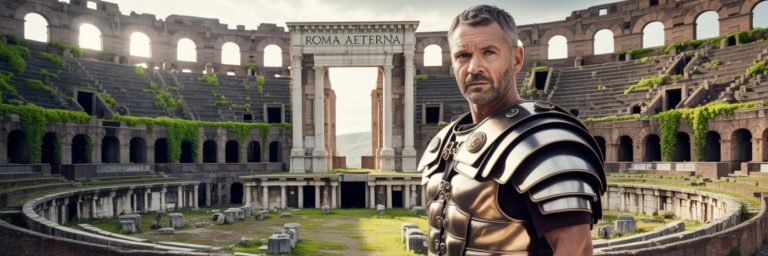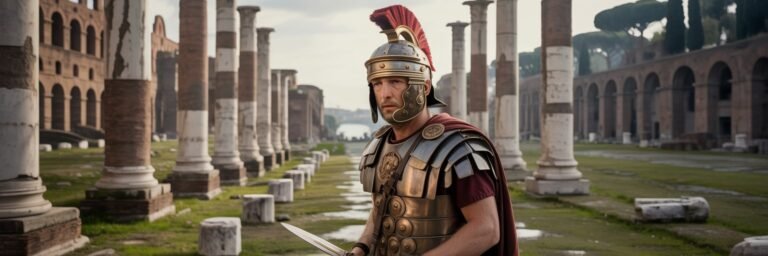INTRODUCTION
The Roman Empire, an enduring symbol of power, conquest, and architectural genius, has been the source of inspiration, study, and fascination for centuries. It was a civilization that truthfully embodied the concept of ‘Rome wasn’t built in a day’ and it certainly didn’t disappear overnight too. This article explores the cultural legacy of this empire, a testament to its indomitable spirit that continues to inspire nearly two millennia later. We will plunge into the historical backdrop, interpretations, controversies, and symbolism, investigate its modern repercussions, and wrap up with the awe-inspiring legacy that the Roman Empire has bequeathed to us.
HISTORICAL BACKGROUND
The Roman Empire, stretching over three continents (Europe, Africa, and Asia), was established in 27 BC. The city of Rome, founded in 753 BC, already had an established Republic, but it transformed into an Empire under the rule of Augustus Caesar. The Empire, over centuries, extended from the Atlantic coast of Europe to the borders of Persia. The immense geographical span of the empire alone contributed to a vast amalgamation of cultures, traditions, and socio-economic practices under its fold.
The political system was a unique blend of monarchy and republic, with the Emperor holding supreme military and judicial powers. Its administration renowned for its effectiveness, the Empire built infrastructure like roads, aqueducts, bathhouses, and amphitheaters that modern civilizations seek to emulate. This span of authority, alongside its robust administrative agenda, allowed for the dispersion of Roman culture and traditions far beyond its borders.
THEORIES AND INTERPRETATIONS
Most historical interpretations focus primarily on the military and political prowess of the Empire. However, there are lesser-known theories that discuss the Roman Empire’s cultural influence, which arguably perseveres more prominently than its once-feared legions.
Scholars like Edward Gibbon and Barthold Georg Niebuhr have asserted that the Empire’s enduring cultural influence resulted from a deliberate strategy of ‘Romanization.’ The Empire propagated its ways through the establishment of cities with Roman architectural designs, patronage of art and literature that celebrated Roman ideologies and grand spectacles in amphitheaters to woo the massive population.
On the other hand, the revisionist theory by J. H. W. G. Liebeschuetz argues that the spread of Roman culture was more organic. He claims it was a natural consequence of providing security, infrastructure development, and a unified legal system, which inadvertently led to the assimilation of people into the all-encompassing Roman lifestyle.
MYSTERIES AND CONTROVERSIES
The cultural influence of the Roman Empire comes with its share of mysteries and controversies. Contradictions abound in the documented history about whether Roman culture flourished exclusively because of imperial promotion or whether it was also influenced by the cultures it absorbed following conquests.
Moreover, the so-called ‘Romanization’ is controversial due to its parallel with modern concepts of cultural imperialism, triggering debates among historians. Was the cultural spread largely harmless assimilation, or did it involve oppressive erasure of local traditions and customs?
Further, the role of religion in the Empire has always been a matter of mystery. Despite being portrayed as staunchly polytheistic, evidence suggests that the Romans readily adopted and even adapted religious practices from the various cultures they ruled over.
SYMBOLISM AND CULTURAL SIGNIFICANCE
The cultural symbolism of the Roman Empire is both rich and diverse. The Roman myths, littered with gods, goddesses, and mythical creatures, are symbols of human virtues and vices. Temples, artifacts, mosaics, and sculptures served not merely as decorative pieces but as potent symbols that reinforced Roman power and ideals.
The Colosseum, for instance, was not only an architectural marvel, but also a symbol of the Empire’s grandeur and its passion for public spectacles. The Roman Baths, apart from their obvious utility, signified the Empire’s approach to community life, health, and leisure. Even Latin, the language of the Romans, has symbolic significance beyond communication, representing intellectual prowess, law, and governance.
MODERN INVESTIGATIONS
Modern archaeology and humanities research have shed new light on the influence of the Roman Empire. Excavations at Pompeii, Herculaneum, and other sites have provided invaluable insights into Roman lifestyle, religious practices, societal structures, and political hierarchies. Furthermore, our understanding of the Roman impact on art, architecture, law, and language continues to evolve through textual analysis and comparative studies.
Scientific techniques like carbon dating, DNA analysis, and digital reconstructions are helping us delve deeper into this historical era. Moreover, interdisciplinary fields like bioarchaeology are contributing to a holistic understanding of the cultural manifestation of the Empire, going beyond mere material culture.
LEGACY AND CONCLUSION
The cultural legacy of the Roman Empire is woven into the fabric of our societies. From our architectural landscape dotted with domes, arches, and concrete structures, to legal systems that echo the Roman codes, the ghosts of this ancient civilization persist. Latin, despite being a ‘dead language,’ survives in scientific terminology, legal jargon, and even the mottos of educational institutions.
Furthermore, Roman literature, philosophy, and myth have influenced European Renaissance, Enlightenment, and every subsequent artistic and intellectual movement. In essence, our calendars, our cities, even our thought processes are shadows of this ancient empire.
In conclusion, the Roman Empire, in its rise and fall, its conflicts and conquests, its gods and gladiators, etched an indelible cultural print in the sands of history. From military might and organizational efficiency to cultural synthesis and propagation, the Empire has left us an intricate tapestry of human endeavor. This resilience of Roman cultural influence, surviving the ravages of time and the crumbling of its physical dominance, attests to its true immensity. The cultural legacy of the Roman Empire is indeed far-reaching, a testament to the civilization that shaped the world as we understand it today.






